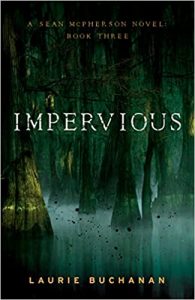CHARACTER REDEMPTION ARCS
CHARACTER REDEMPTION ARCS

The gateway arch st. Louis, Missouri
In fiction books, redemption arcs are tied to a character—the protagonist, antagonist, or even a secondary character—and vary by the author’s intention, genre, plot, and characters.
The dictionary defines redemption as “An act of redeeming or atoning for a fault or mistake.” In the definition, the word “act” implies action. Choices create action.
A redemption arc is when a character performs a heroic act that compensates for his previous wrongdoings or is redeemed by another character.
Is this always true? No. Experientially, readers know that there are exceptions.

Arc of the Castle in Trakai City near the Capital of Lithuania
Take Sean McPherson, for example. He’s the ex-cop turned PI protagonist in my Sean McPherson crime thriller novels. And while he hasn’t done anything wrong, he believes he’s responsible for his ex-partner’s death. Unfortunately, this belief has taken on the form and extensive weight of survivor’s guilt that tends to color his decisions—sometimes positively, sometimes negatively.
Readers ask if Sean McPherson is afraid of anything. Yes, he’s scared of failing others. Having experienced the horrific consequences of a violent crime (the one responsible for killing his partner), McPherson doesn’t want anyone else to suffer similarly. Instead, he wants to make the world a better place and protect people before they even know there’s a threat.

Casa Mila arches, barcelona, spain
McPherson’s greatest weakness and strength are the same—his humanity and empathy. These make him willing to fight fiercely for justice for others.
I leverage McPherson’s fear, strength, and weakness time and again throughout the storyline. Why? Because opening him to great pain and sorrow is the perfect catalyst for an arc.
The redemptive act can be external, internal, big, or small. The repercussion is that the action performed by the character helps make up for what s/he did (or believes they did) in the past.
Now let’s flip it.
The protagonist can extend a redemption arc to the antagonist. Will they accept or reject it? Will it work? That depends on how well you know your characters.
I maintain a “Character Bible” detailing each character: Their backstory. What makes them tick. Their personality type. Their strengths and weaknesses (physical, mental, emotional, and spiritual). This information informs me if they’re the type who will work to redeem themselves or accept redemption from another character.
At the beginning of each scene, I reveal the character’s this-point-in-the-story goal. Then I create tension by introducing something (a person, place, thing, event, or opportunity) that opposes or obstructs their redemption.
This is where I can leverage a character’s weakness. It might be physical, mental, emotional, spiritual, or a combination thereof. Does s/he go too far for those s/he loves? Does s/he allow themself to be held hostage by the opinion of others? Does the character recognize their weakness, or are they blind to it? If they’re aware, do they take action to change it? Or do they remain unaware, thus unable to work for redemption?
Does my character react (kneejerk) or respond (thoughtful) when an obstacle is introduced? The answer’s worth the price of admission because it reveals the character’s true colors—the good, the bad, and the ugly.
Redemption arcs are necessary because they offer hope to readers—sometimes even long after the last page is turned. One of my favorite redemption arcs is from Anthony Doerr’s Pulitzer Prize-winning All the Light We Cannot See.
The story takes place against the backdrop of World War II when a blind French girl, Marie-Laure LeBlanc, is charged with protecting a prized blue diamond that the Nazis want. A German orphan, Werner Pfennig, works for the Nazis but is repulsed by their cruelty. Pfennig and his cohorts find LeBlanc and the diamond. But to seek forgiveness for the Nazis’ acts, he doesn’t let the diamond be taken or LeBlanc be killed.
Redemption arcs aren’t one-size-fits-all. Instead, they’re unique to the storyline and characters. Readers love to love characters and love to hate characters. A well-written redemption arc goes a long way toward satisfying their desires.
—
Laurie Buchanan writes the Sean McPherson novels—fast-paced thrillers set in the Pacific Northwest that feature a trifecta of malice and the pursuit and cost of justice.
A cross between Dr. Dolittle, Nanny McPhee, and a type-A Buddhist, Buchanan is an active listener, observer of details, payer of attention, reader and writer of books, kindness enthusiast, and red licorice aficionado. Laurie’s goal is simple. To leave you wanting more.
Her books have won multiple awards, including the Foreword INDIES Book of the Year Gold Winner, the International Book Award Gold Winner, the National Indie Excellence Awards Winner, the Crime Fiction/Suspense Eric Hoffer Awards Finalist, the PenCraft Award for Literary Excellence, and CIBA Clue Book Awards Finalist.
Laurie and her husband live in the Pacific Northwest, where she enjoys long walks, bicycling, camping, and photography—because sometimes the best word choice is a picture.
To learn more, please visit Laurie’s website at www.lauriebuchanan.com.
IMPERVIOUS
 In the village of Fairhaven—nestled between Washington state’s Bellingham Bay and the Cascade Mountains, home to writers’ retreat Pines & Quill—friends and family have gathered for the union of Sean McPherson and Emma Benton. Sean has been working with the FBI and local police to help solve crimes, particularly murders bearing the mark of crime boss Georgio “The Bull” Gambino. Emma, who has just learned to walk again, has begun to feel at home and hopes to one day raise a family.
In the village of Fairhaven—nestled between Washington state’s Bellingham Bay and the Cascade Mountains, home to writers’ retreat Pines & Quill—friends and family have gathered for the union of Sean McPherson and Emma Benton. Sean has been working with the FBI and local police to help solve crimes, particularly murders bearing the mark of crime boss Georgio “The Bull” Gambino. Emma, who has just learned to walk again, has begun to feel at home and hopes to one day raise a family.
But just as the festivities begin and corks fly, an explosion shatters everything, killing one and injuring others. From Bellingham to San Francisco and New Orleans, the chase is on to discover who’s dead set on ensuring the newlyweds don’t live happily ever after.
The writers currently in residence at Pines & Quill include a vineyard owner, a Bryn Mawr College professor, a special education teacher accompanied by her seeing-eye dog, and an intuitive who can’t—or won’t—identify the killer. Gambino has a knack for finding people in even the most inaccessible places to do his bidding. Could one of the writers be on his payroll?
BUY HERE
Category: On Writing

























